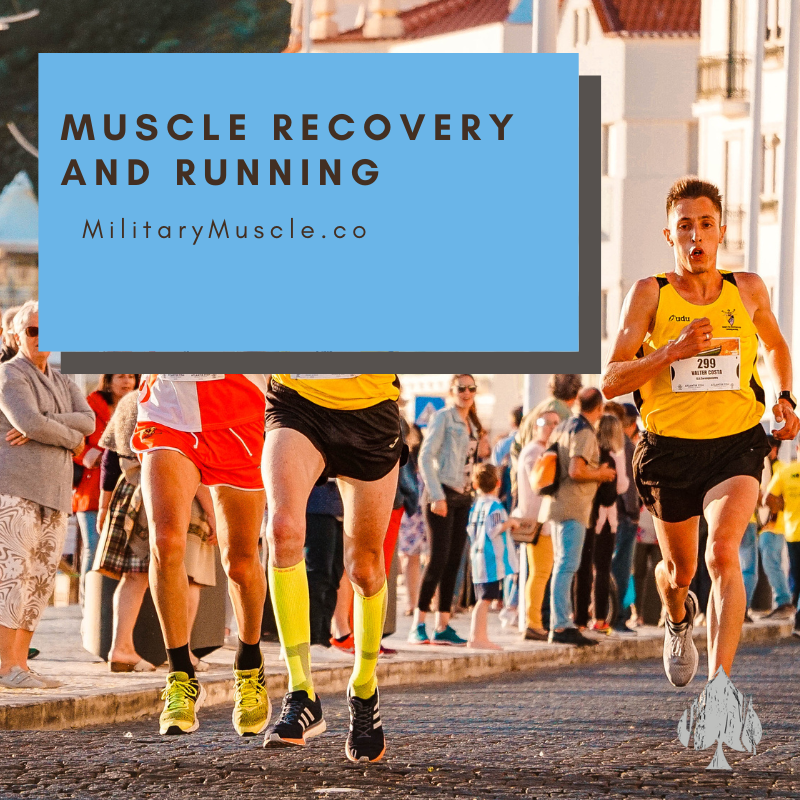Muscle Recovery after Long Run

Written by Ben Bunting: BA, PGCert. (Sport & Exercise Nutrition) // British Army Physical Training Instructor // S&C Coach.
--
Your goal is to reach the end as fast as you can. We get it!
It is easier for some people to get motivated to workout than others. However, we all know that the soreness of your muscles can make it difficult to exercise.
This can be even more difficult as we get older as it takes longer for our muscles to recover.
What can be done to reduce downtime due to sore muscle pain?
In this article we shall cover the following:
- Why does it hurt to exercise the muscles?
- Why is it important to recover?
- What you can do to improve your recovery after workouts.
Why do muscles hurt after exercising?
Exercise causes muscle soreness. After exercising, if you feel sore in your muscles you should be happy that you did the work you set out to do. This soreness may interfere with exercise, but usually goes away in one or two days. As we exercise, muscles are stretched and contracted to assist in the exercise.
Overworking the muscles can cause tiny tears, which will lead to muscle soreness. There are the main causes of muscle pain:
- Change your usual exercise routine
- Pushing harder and faster than usual
- Work out more frequently
- Work new muscle groups
- Overworking muscles
DOMS is a term used to describe muscle pain that occurs after an exercise session. There's no need to be concerned, because it is simply the body's natural response to tiny fibre tears caused by exercise. This is just the muscle healing process.
Why is recovery important?
It is important to understand that your muscles will grow when you rest. When the muscles are torn, this is what resistance training does. Your muscles grow, adapt, repair and strengthen when you are resting,
Building muscle
It's not only your muscles that need recovery; it's also your heart and your lungs. By doing this, you will become stronger and fitter the next workout you do. Rest periods are essential for muscle growth. A lack of rest can lead to injuries and other setbacks. It's the same with overtraining. This can lead to more than DOMS.
How to recover from workouts more quickly.
You should plan your exercises to include rest breaks in order to achieve muscle growth. There is no doubt that we all want to get to the next phase as quickly as possible. While waiting for the soreness to subside before moving on can be a good idea, there are other ways to accelerate your recovery.
Do Some Light Exercise.
It's not necessary to rest completely. You can raise your heartbeat by doing some light exercises. This will reduce the buildup of lactic acid in your body and remove toxins. You can boost circulation by walking or swimming. The activities will also increase circulation and decrease the amount of lactic acid build-up in your muscles.
Variate your workouts.
You can avoid a break in your program by focusing each day on a different group of muscles. By planning leg or chest day, you will be able to move onto the next day to work on a different part of your body and allow the muscle groups from the day prior to recover.
Drink plenty of water.
If you're looking to stay active, hydrate yourself and replenish your fluids. Stay hydrated. You lose water when you sweat, and especially during hot weather. Keep your water intake up to date. It will improve recovery and muscle flexibility, as well as reduce the soreness of muscles.
Choose alternatives if water doesn't suit your tastes. For example, green tea and low-sugar drinks can be added to help reduce soreness or cramps following exercise. You should avoid drinks with high levels of sugar, caffeine, and alcohol.
Eat Healthy Snacks
You'll want to stay on track with your goals by being on top of the diet. That means cutting out unhealthy treats. Being smart and selective with snacks is a great way to help. It is best to select snacks that can help with recovery and overcome your hunger.
To replenish energy in the muscles, eat healthy snacks within 30 minutes. You will be able to restore your glycogen. The carbs and protein in the snacks will restore your energy and help with muscle recovery. Greek yoghurts, protein bars, shakes with protein, popcorn made from whole grain, nuts, almonds, and fruits are great snack foods.
Five-minute Cooldown
Some people ignore the cooldown, while others think it is unnecessary. However, it's a crucial part of any workout and helps reduce muscle soreness afterward.
Cooldowns will allow your heart to slow down gradually and keep the blood flowing steadily, alleviating the sensation of being light-headed that can sometimes occur after exercise. You will feel better about yourself and your abilities to control your own body. It is also good for mental health.
Conclusion
In order to reduce muscle pain, you need to take care of yourself and be a sage with your nutrition and recovery periods. Start a new routine of exercise slowly to reduce the risk of injury and allow your body to adapt.
You can continue to exercise while you rest other areas of your body by eating healthy snacks and switching muscle groups daily. Cool down after every workout for at least 10 mins and don't forget to hydrate!
Also, remember that electrolytes found in milk or fruits such as bananas help with muscle function, and performance. We include electrolytes in Military Muscle testosterone booster to help keep you in peak performance.



